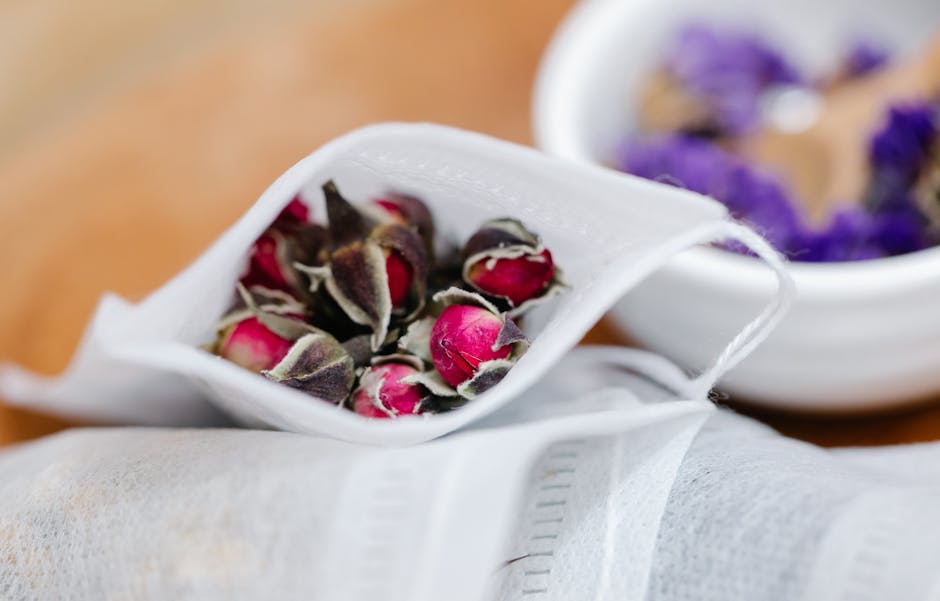The Year of No New: Transform Your Life with a Buy Nothing Mindset
Imagine a year where instead of splurging on new gadgets or fashion, you embrace a life defined by connection, creativity, and community. The “Year of No New” is more than a fleeting trend; it's a transformative journey that cultivates resilience and fosters meaningful relationships. In an age of rampant consumerism, adopting a buy-nothing lifestyle not only reduces waste and environmental impact but also nurtures our mental health and inspires innovative resourcefulness. Join us as we delve into this fascinating lifestyle choice, exploring actionable strategies, personal stories, and the significant benefits of prioritizing community over consumption.
What Does “The Year of No New” Mean?

At its core, the “Year of No New” is a commitment to limit new acquisitions for an entire year. Whether it’s clothing, electronics, household items, or even food, the idea is to resist the temptation of consumerism and instead focus on what you already own. This lifestyle shift encourages you to embrace sharing, borrowing, and creative repurposing, fostering a deeper connection with your community and the resources around you.
By choosing to forego new purchases, you not only minimize your ecological footprint but also open a pathway to creativity. Imagine crafting your own kitchen gadgets from items you already have or organizing neighborhood exchanges for items you no longer use. Think of it as an opportunity for personal growth—a chance to rediscover your surroundings, engage with your neighbors, and connect with your community in profound, meaningful ways.
The Emotional Benefits of Choosing to Buy Nothing

Living without the constant pressure to purchase new items can have significant emotional benefits. Studies have shown that consumerism can lead to anxiety, dissatisfaction, and a sense of emptiness. When you step back from that cycle, you may find that your mental health improves. Less clutter in your life equates to less clutter in your mind. You are likely to feel more focused, grounded, and connected to what truly matters.
Moreover, a buy-nothing lifestyle fosters creativity. You become a master at reusing and repurposing everyday items. This resourcefulness enhances your problem-solving skills, encouraging you to think outside the box and discover new uses for old belongings. Whether it’s transforming an old t-shirt into a reusable grocery bag or using leftover food scraps for garden compost, the possibilities are endless.
Building Community Connections

One of the most enriching aspects of the “Year of No New” is how it draws people together. By limiting purchases, you’ll likely turn to neighbors, family, and friends for support, borrowing tools or clothing instead of buying new. Community swaps, gathering resources that individuals no longer need, can become an integral part of this journey.
Participating in community resource programs, such as tool libraries or clothing exchanges, can form a robust support network. It’s astonishing how many valuable items are lying dormant in our neighborhoods! Connecting through shared resources builds not only friendships but also strengthens bonds within the community, enhancing the fabric of society.
The act of sharing doesn’t just enhance connections; it also helps break down barriers. These exchanges create opportunities to meet individuals from all walks of life, which enriches your understanding of the community around you. When you share stories and resources, you cultivate empathy and solidarity, paving the way for a collective approach towards sustainability.
Strategies to Embrace the Buy Nothing Lifestyle

Embarking on a year without buying new items may initially feel daunting, but with some strategic planning, it can be a rewarding experience. Here are some actionable steps to kickstart your journey:
1. Assess Your Current Possessions
Before committing to a buy-nothing year, take some time to declutter your belongings. Go through your home room by room and identify items you rarely use. This process can illuminate just how much you already own and provide a clearer map for your consumption habits.
2. Create a Reverse Shopping List
Instead of creating a traditional shopping list, consider making a "reverse shopping list" that includes items you already own that can fulfill your needs for the year. When a need arises, consult your list first!
3. Join Local Let’s-Share Groups
Look for local community groups that encourage resource-sharing. Websites and social platforms often host groups where people share everything from tools to clothes. This facilitates a supportive environment, helping to shift your mindset from ownership to community access.
4. Get Crafty with Upcycling
Instead of viewing old or broken items as waste, see them as opportunities. Upcycling various objects not only reduces the need for new materials but also sparks creativity. Whether you want to transform old furniture into something stylish or repurpose glass jars for storage, getting crafty keeps your mind engaged while doubling as a sustainable practice.
For some inspiration, check out our article on how to transform waste into wonder.
5. Engage in Community Events
Attend local events that focus on sustainability, skill-sharing, or resource swaps. These gatherings can be a great way to meet like-minded individuals who also embrace the buy-nothing philosophy. Sharing skills—from gardening to cooking to crafting—enhances mutual learning and promotes a sense of togetherness.
6. Embrace Digital Minimalism
Consider adopting digital minimalism in conjunction with your buy-nothing year. By limiting digital distractions, you align your attention towards tangible relationships and resources. This can lead to improved focus and better mental clarity. You can read more about embarking on this journey in our guide on digital minimalism.
7. Reflect on Your Experience
Keep a journal documenting your journey over the year. Reflecting on your feelings and experiences can highlight shifts in your mindset and emotional wellbeing. It might be interesting to see how your perspective evolves regarding ownership and the value of community engagement.
Creative Ways to Fulfill Needs Without Buying New
Throughout the year, needs will inevitably arise, but remember, purchasing is just one option. Here are some creative alternatives:
- Borrowing: Need a tool for a DIY project? Rather than buying, ask to borrow it from a neighbor or friend.
- Renting: For items you don’t need regularly, like a projector for movie night, consider renting instead of purchasing.
- Swapping: Organize a swap party with friends where you can trade clothing, books, or household items.
- Bartering: Trade your skills or services in exchange for items you need. For example, if you’re a great cook, offer meal prep for someone in exchange for a gardening tool.
The Intersection of Sustainable Living and Community Building
The byproduct of adopting a buy-nothing lifestyle often leads to enhanced sustainable practices. By focusing on reusability and resource-sharing, you are inadvertently contributing to a larger movement towards sustainability. The ripple effect of these practices benefits not just individuals but the entire planet.
It’s essential to remember that embracing sustainability doesn’t stop at personal consumption. Consider engaging in local initiatives that aim to improve the ecological footprint of your community. Activities such as community gardening, promoting local produce markets, and even participating in clean-up drives amplify the positive impact of your individual efforts.
To further explore how you can engage with sustainable practices in your own garden, check out our resource on transforming your garden into a sustainability hub.
Personal Stories: Transformation Through Community Connections
Understanding the impact of the buy-nothing lifestyle becomes infinitely more tangible through personal narratives.
Take the story of Sarah, who, after committing to a year of no new purchases, found unexpected joy in neighborhood exchanges. Initially overwhelmed by the prospect, she soon discovered a wealth of support when her blender broke down. Instead of rushing to purchase a new one, Sarah reached out to her community’s “swap and share” group, only to find not just a blender but a newfound friendship with a neighbor, who also loved to bake.
This experience transformed her outlook—not just on material goods but on community. As she dove into the world of sharing, Sarah felt a sense of belonging that she never experienced while in a shopping mall.
Or consider Tony, who embraced a buy-nothing philosophy while navigating the challenges of a tight budget. He turned to community gardening and began sharing the fruits of his labor with neighbors. This initiative not only produced an abundance of food but also forged genuine connections that provided deeper emotional satisfaction than any purchase ever could.
Their stories exemplify how the buy-nothing lifestyle is not merely about what you abstain from buying; it’s about the relationships you build and the profound sense of community that blossoms from shared experiences.
Next Steps: Embrace the Journey Towards Sustainable Living
If the concept of a year without new purchases feels appealing, start slow. Begin with a month-long commitment, perhaps, gradually testing your ability to resist consumerist urges. Use this time to reflect on your motivations and the changes you want to embrace for sustainable living. Surround yourself with like-minded individuals who can support and inspire you through this journey.
Remember that every step toward embracing a buy-nothing lifestyle contributes to a more sustainable future for all. Cultivate your resourcefulness, build community connections, and revel in the unexpected joys that come from living with less.
Consider exploring related content that can guide your sustainable journey, such as how to design your space for mental well-being, or discovering how summoning nature through sound can enrich your environment.
By making small changes today, you can lay the foundation for a more sustainable tomorrow.



